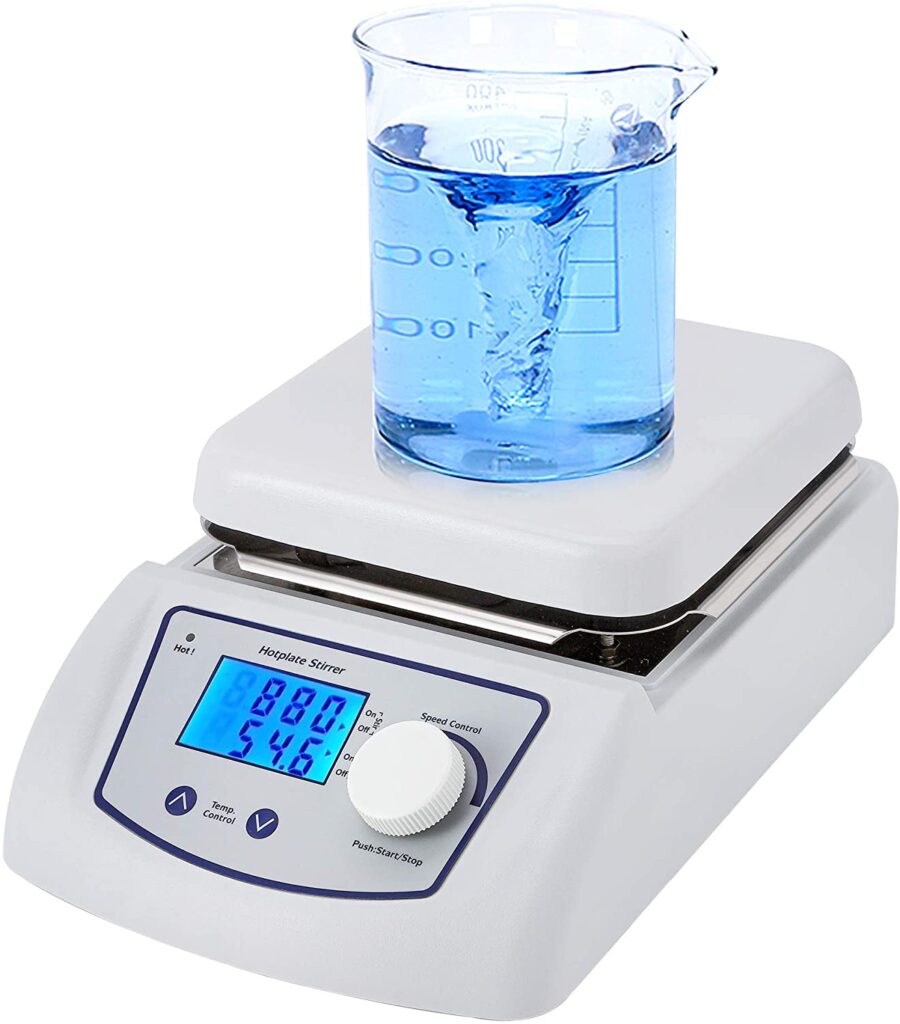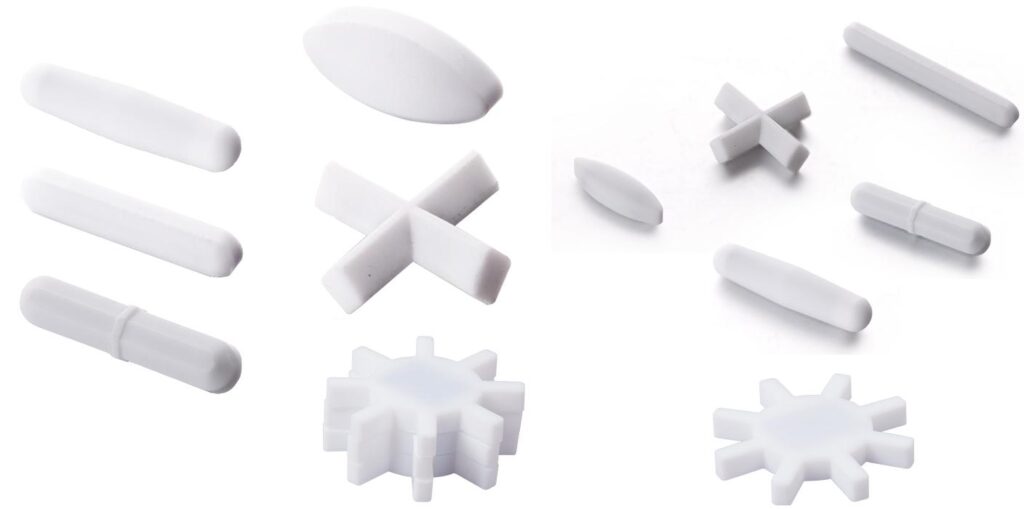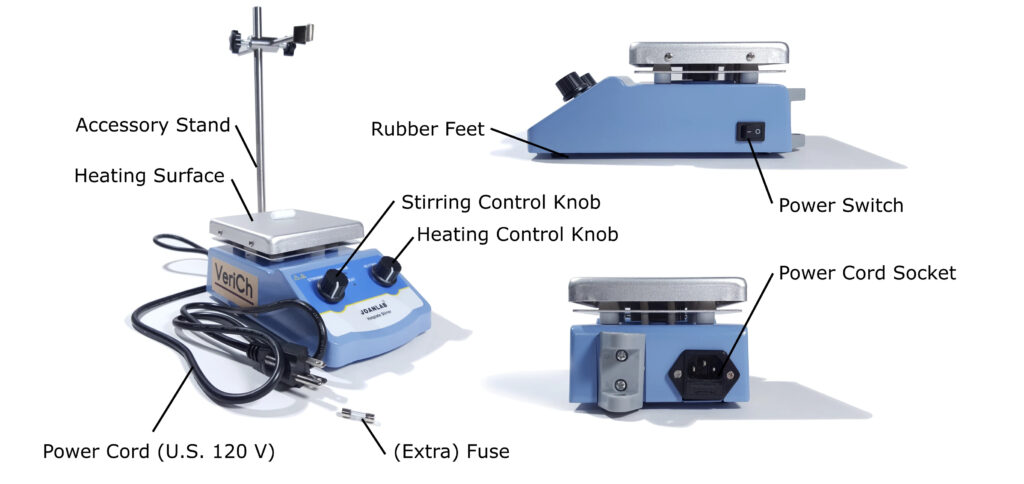- The process of creating a drug - May 23, 2023
- How do scientists model mental disorders in animals? - May 23, 2023
Description
A magnetic stirrer or magnetic mixer is a laboratory tool which utilizes a revolving magnetic field to make a stir bar (or flea) inside a fluid spin rapidly, hence stirring it. It is employed in chemistry and biology in situations where other types of stirring, such as motorized stirrers and stirring rods, may not be practical. Magnetic stirring is a commonly used method of stirring and mixing in liquid media. This technique can be employed over a wide temperature range and with almost any chemical agent, in both open and closed systems, under pressure or vacuum.

Implementation
Magnetic stirrers are often employed in chemistry and biology, since they offer the advantage of stirring hermetically closed vessels or systems without the need for intricate rotary seals. They are preferred to gear-driven motorized stirrers due to their silence, greater efficiency, and lack of external moving parts that could break or become worn out (with the exception of the simple bar magnet). Magnetic stir bars are highly suitable for glass vessels typically used for chemical reactions, as glass does not significantly interfere with a magnetic field. The limited size of the bar implies that magnetic stirrers are only suitable for relatively small experiments of 4 litres or less. Stir bars also encounter difficulty with thick suspensions or viscous liquids. For larger volumes or thicker liquids, a mechanical stirring system (like an overhead stirrer) is usually necessary. In synthetic chemistry, a combined magnetic stirrer/heater is usually employed with a heating bath (frequently oil, sand, or low-melting metal) or cooling bath (usually water, ice, or an organic liquid combined with liquid nitrogen or dry ice as coolant), allowing reaction vessels situated in the bath to be held at temperatures ranging from approximately -120 to 250 °C.
Design
The essential arrangement comprises of two parts: a stirrer magnet embedded in the liquid and a magnetic drive situated outside the container. Both, stirrer magnet and magnetic drive constitute a magnetic circuit. To guarantee easy stirring in fluids with different viscosities, the magnetic drive should have a wide selection of varying velocities. Therefore, the intensity and form of the magnetic circuit between stirrer magnet and drive magnet is extremely important.

The stirrer magnet has a bar magnet enclosed in a shielding layer to stop any contamination of the liquid. Usually, Alnico V is used as the core of the stirring magnet, nevertheless, Samarium-Cobalt is a rarer option. Polytetraflouroethylene is the favored outer layer due to its long-lasting chemical and thermal resistances (-200 °C to +260 °C). It is also simple to process.
A fundamental accessory for the magnetic hotplate stirrer is a stirring bar. Present-day stirring bars feature a polytetraflouroethylene (PTFE) shell on the outside and a robust permanent magnet on the inside. The stirring bar is placed within the material which needs to be stirred, and the vessel containing the material is rested on the heating surface of the hotplate. The PTFE shell, being unreactive, keeps the stirring bar from connecting with the material. A spin or pivot ring is observable on the circumference of the stirring bar, enabling the bar to revolve freely when placed on a flat surface.
Varieties of stirring bar
It is hard to discover the most efficient magnetic stirring bar for a particular purpose, yet essential elements are the shape of the container and the viscosity of the stirring medium. In a Petri dish, a long stirring bar at low speed will be effective, while in a round bottom vessel, egg-shaped (oval) magnetic stirrers will be a suitable option. The optimal setup is when the magnet of the stirring bar and the magnet of the drive are of identical length and with the least possible separation between them.

The utilization of a SmCo magnet to heighten the magnetic intensity may be beneficial for various uses. However, this can also lead to negative effects:
Movement. When the stirring magnet and drive magnet are of diverse lengths, the stirring magnet may drift towards a pole of the drive magnet.

Slowing. A powerful interaction between the driver and agitator magnet can result in a deceleration effect. Owing to the pressure of the agitator magnet on the underside of the container, the rate of revolution is decreased and revolution can even be prevented. In general, no guidance for or against a particular stirring bar design can be given. In case of hesitation, a trial of various stirring bars under your own circumstances may be beneficial. The second part of this stirring system is the magnetic driver that consists, in its most basic form, of a basic, speed regulated induction motor or a stepper motor. In some cases, the motor includes automatic reversal to enhance mixing.

Normally, the drive magnet is a basic square bar magnet, a U-magnet or a composite SSMC magnet. Its rotation provokes rotation of the agitator magnet in the liquid. The predetermined speed can be adjusted by an incorporated speed controller. If you’ve misplaced your magnetic stirrer and don’t have a backup, you can use a metal clip or another small metal bar as a stirrer. The metal bar will rotate in a magnetic field and mix your liquid.

Magnetic Hotplate Stirrer
It is a must-have tool for any laboratory setting that necessitates the heating and stirring of fluid media. It is incredibly helpful in ensuring that heating is even and rapid, particularly when dealing with slurry or trying to regulate boiling. Without one, these tasks can be difficult and time-consuming.

A magnetic hotplate stirrer consists of the following components: A control panel at the front with control dials, protective rubber or plastic feet to keep the electric device off a potentially wet surface, a power switch on the side (if not combined with the control dials), the heating surface at the top, and a power lead from the bottom or the rear. The heating wire and rotor are located beneath the heating surface of the magnetic stirrer (drawing not to scale).

A permanent magnet or electromagnet is located on the rotor of all electronic stirrers in the hot plate. The Verich hotplate has a permanent magnet fixed on its rotor, which is situated beneath the heating surface and rotates freely. This magnet can be seen in the space beneath the heating surface.
Hotplate Exploitation
Once the hot plate is powered up and the material plus the stir bar are secure (e.g. by a clamp and stand), you are ready to start heating and stirring. On the front of the hotplate are two knobs. These are the variable knobs for both heating and blending, allowing for precise control over the process. Begin by turning on the stirring to an appropriate level. Generally, this should be enough to guarantee the top layers of fluid within the vessel are completely mixed with the bottom layers. If it does not seem like the top is being adequately disturbed, raise the stirring setting.
Subsequently, turn on the heating by rotating the heating knob. A slight buzzing may be heard as the hotplate increases the current delivered to the heating coils beneath the heating surface. Since this is a high-current, high-temperature situation, sometimes current limiters are put in the device for safety. For instance, in the Verich hotplate a fuse will disable the heating system if the current provided to the coils is too high (such as in the case of a power supply fault, or if there is extreme wear and tear on the device).
Heat output varies from device to device. Depending on the size of the hotplate, it may take between 10 and 25 minutes to heat a litre of water from room temperature. Consider pre-boiling your medium from a more potent heat source such as from a gas burner or kettle and utilizing the hotplate only to sustain the temperature while stirring.

